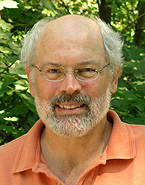The Anti-Greenhouse Gas? Climate Scientist Evaluates Geoengineering Solution to Climate Change
August 18, 2008

Alan Robock, a professor of environmental science at Rutgers University, sat in a scientific meeting listening to his colleagues explain how global warming might be reversed by a novel technique: injecting sulfate aerosols into the stratosphere.
The idea makes some sense. Immediately following large volcanic eruptions, such as Pinatubo in 1991, global temperatures drop and remain lower than normal for a few years. The global cooling results from sulfate aerosols spewed into the atmosphere which block out some of the incoming sunlight. In a sense, these aerosols are an anti-greenhouse gas.
As he listened to the plan for a global warming fix, Robock immediately thought of reasons why it might be a bad idea. In fact, before the talk was through, he had a list of 20. He later used a NASA climate model to test his concerns. At the invitation of Liang Yiang, professor in the Jackson School of Geosciences, Robock presented his critique to Yang’s university students:
- Climate models suggest that under some stratospheric aerosol injection scenarios, parts of the world such as India, North and Central Africa and South Asia would get less precipitation. That could impact many millions of people who rely on rain for agriculture and drinking. “If you’re going to ‘solve’ the global warming problem, but you reduce precipitation that people rely on, that’s not a good solution,” said Robock.
- A host of environmental disturbances would likely result, including depletion of Earth’s protective ozone layer, more acid rain, more ocean acidification and less direct sunlight for plants.
- The cost could be staggering. Because temperatures would rise quickly once injection stops, the process would have to be continuous and never ending.
- The prospects for solar power as an alternative energy source would dim with the reduction of incoming sunlight.
- Perhaps one of the most unusual side effects would be a whitening of the sky. How might people adjust to a sky that is no longer blue? Robock noted that we evolved under a blue sky. “Suicides increase in Seattle during the grey winter,” said Robock. “I even make my PowerPoint slides blue because people find the color pleasing.” Aerosols would however make for redder, more dramatic sunsets.
Robock said there are also many unknowns that would have to be addressed before such a system could be used in good conscience. For example, how do you get the world to agree on optimum climate conditions?
“Whose hand would be on the thermostat?” he wondered. “What if Russia wants it a couple of degrees warmer and India wants it a couple of degrees cooler? Would you have geoengineering wars?” He also pointed to examples of past large scale engineering projects that had unexpected outcomes as a reason to be cautious.
“At the current level of understanding, there are too many potential problems with geoengineering, and it would be much cheaper and easier to solve the global warming problem by reducing greenhouse gas emissions,” he concluded.
by Marc Airhart
For more information about the Jackson School contact J.B. Bird at jbird@jsg.utexas.edu, 512-232-9623.
